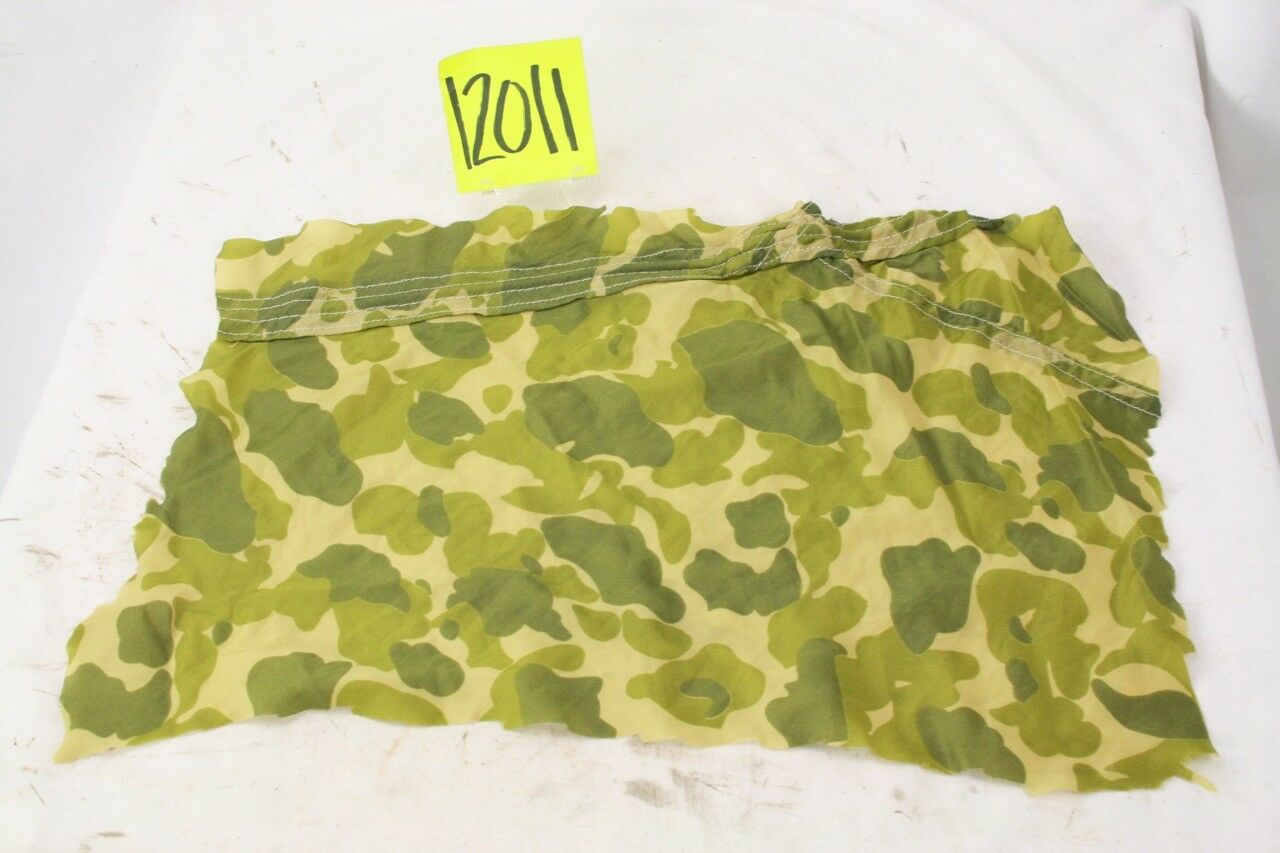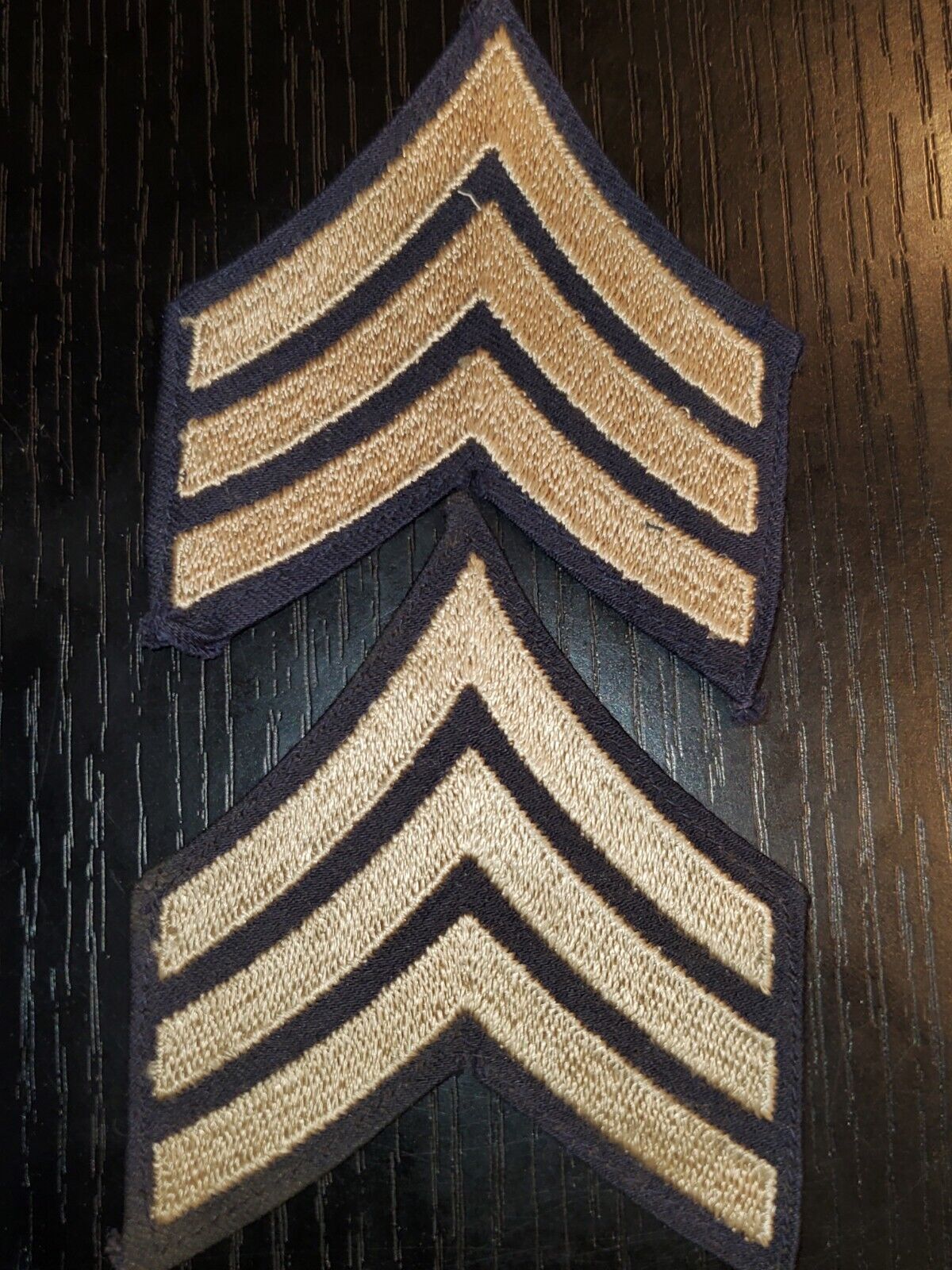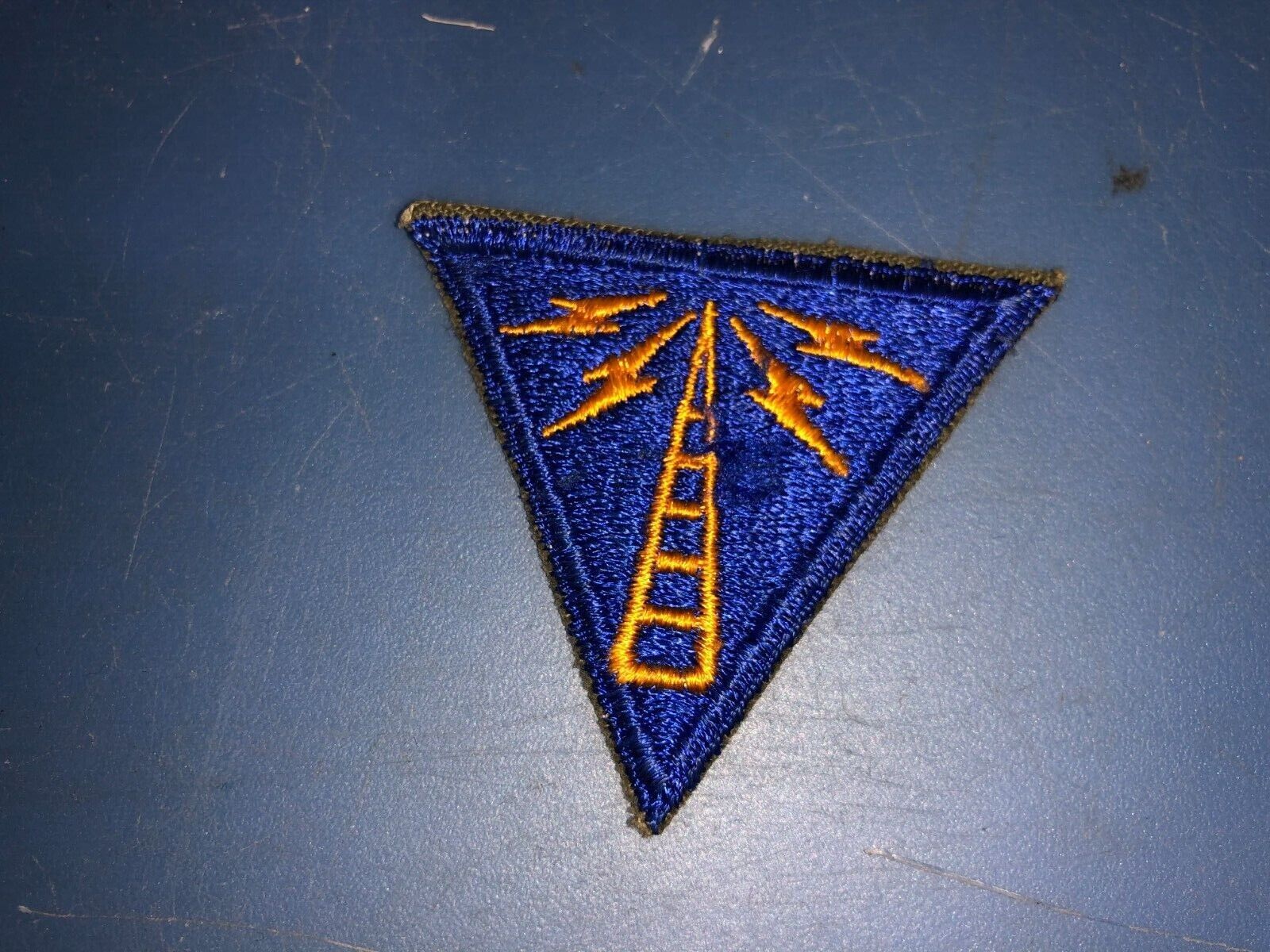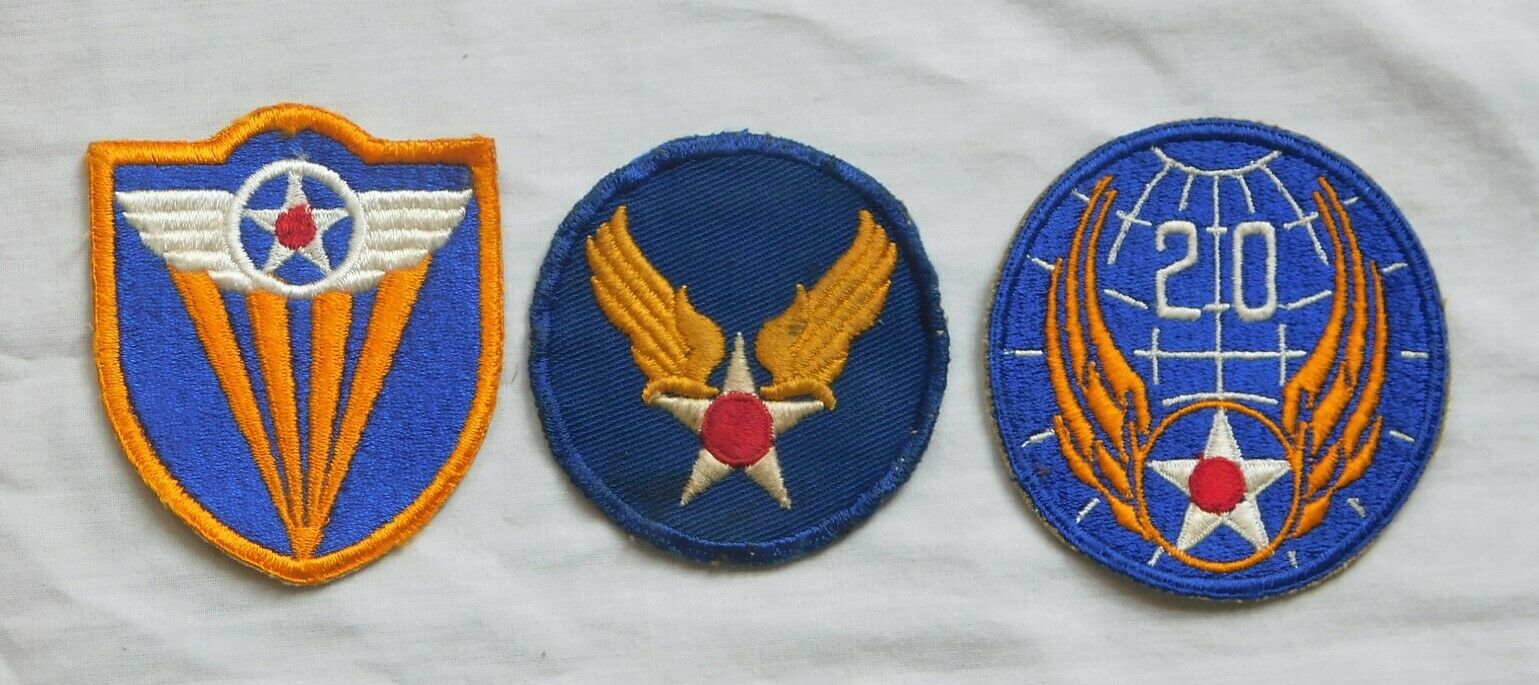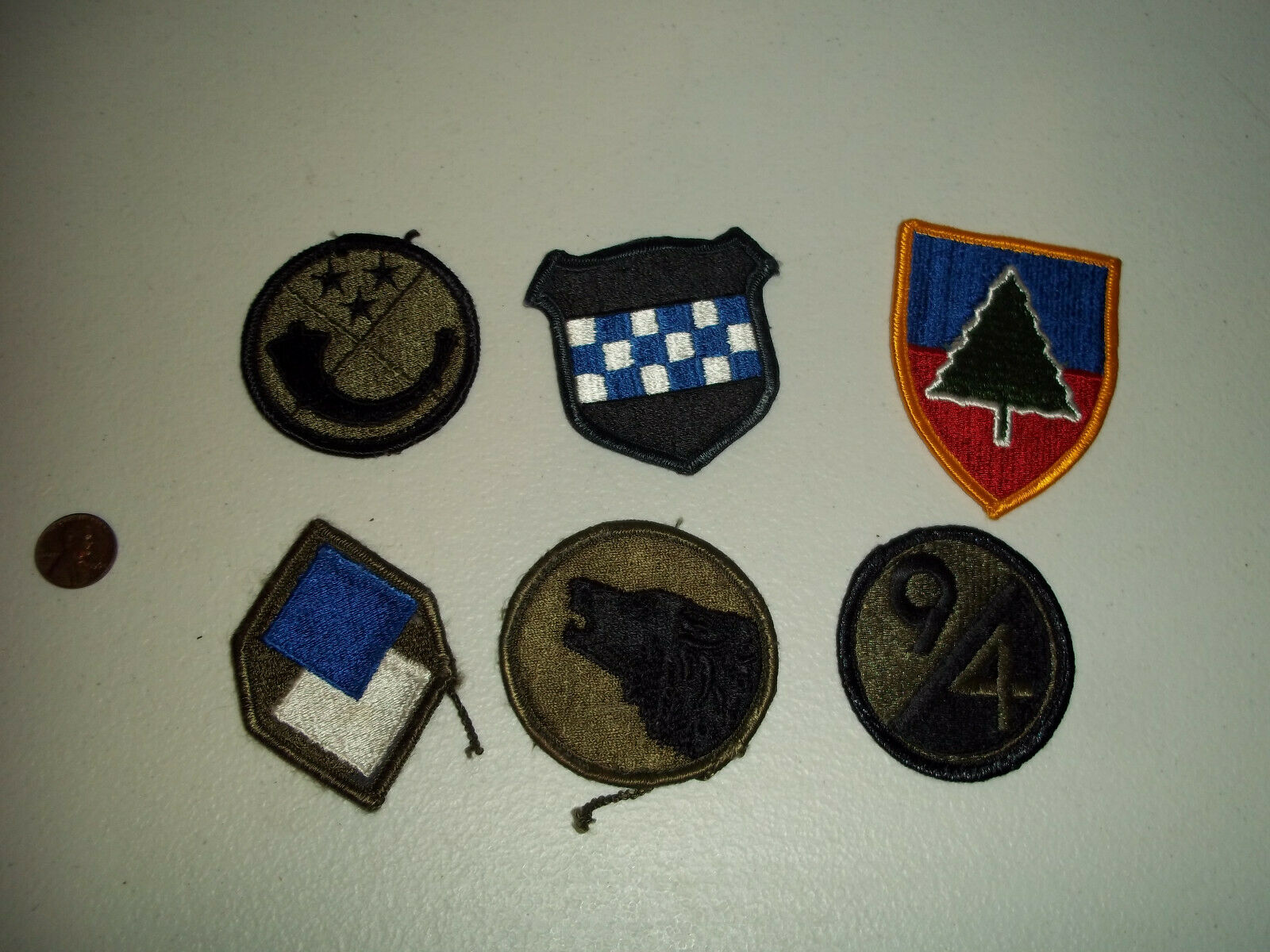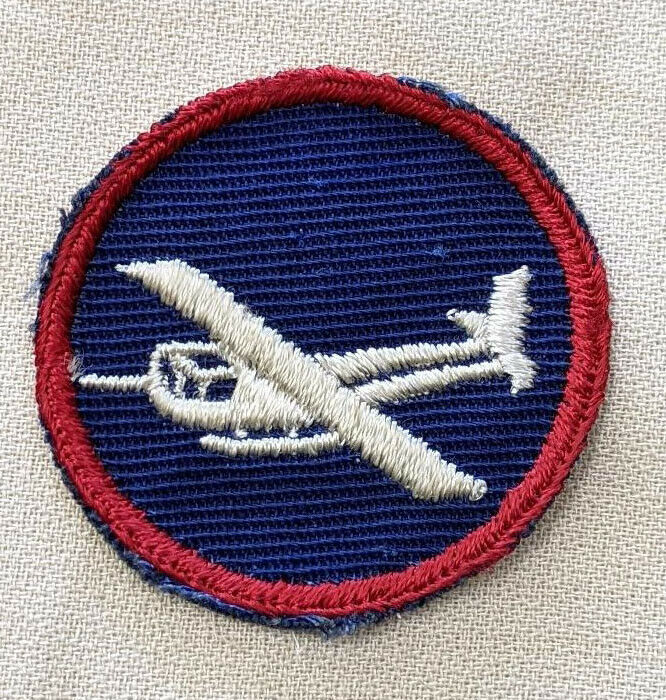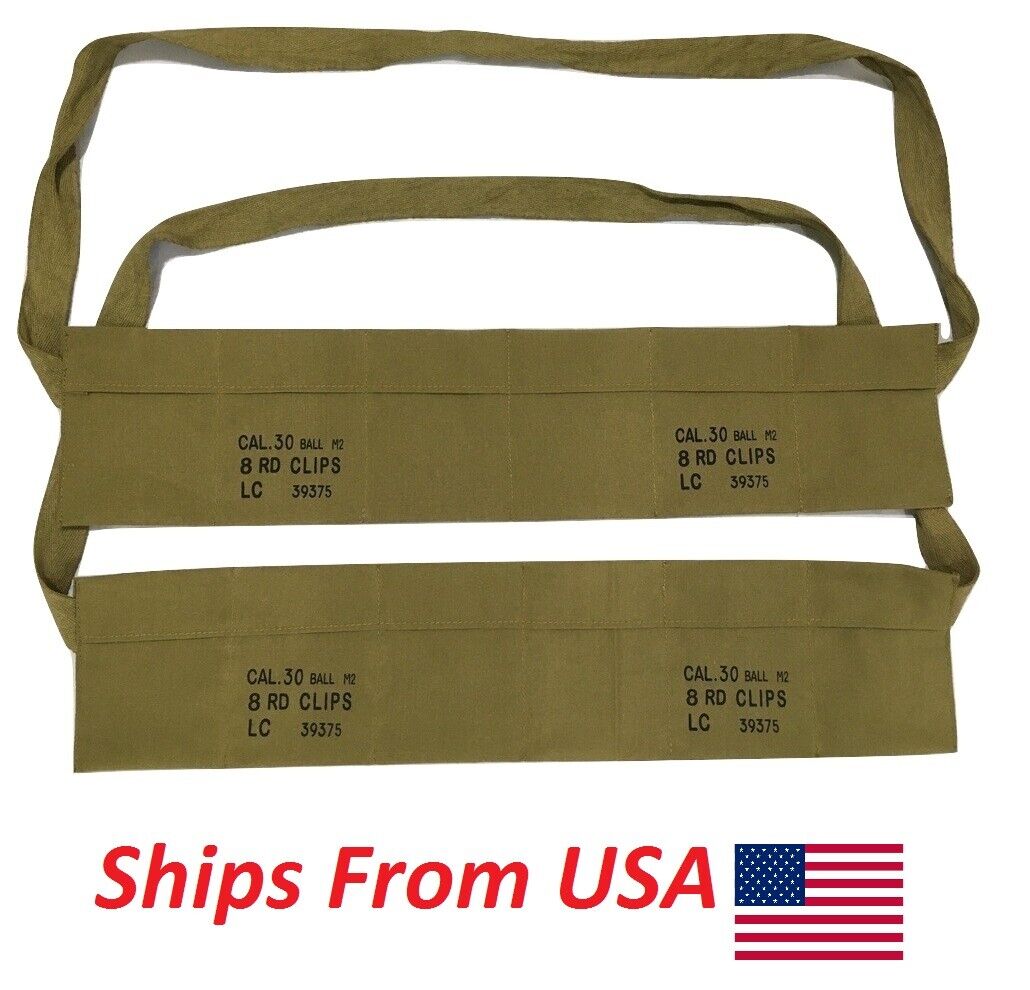-40%
WW2 Medals off Uniform + 76th Infantry Division off Uniform MOST REAL THING !!!
$ 68.63
- Description
- Size Guide
Description
PLEASE FOLLOW OUR E BAY STORESEE ALL PICS
SALE
SEE OUR STORE
PLEASE READ WHOLE ADD
SEE STORE !!!!
76th Infantry Division (United States)
From Wikipedia, the free encyclopedia
(Redirected from
76th Division (United States)
)
Jump to navigation
Jump to search
76th Infantry Division
76th Infantry Division shoulder sleeve insignia
Active
1917–1919
1921–1945
1963–1996
2013–present
Country
United States
Branch
United States Army
Type
Infantry
Size
Division
Nickname(s)
"Onaway Division," "Liberty Bell Division"
Engagements
World War I
World War II
Ardennes-Alsace
Rhineland
Central Europe
Commanders
Current
MG Miles Davis
Insignia
Distinctive unit insignia
The
76th Infantry Division
was a unit of the
United States Army
in
World War I
,
World War II
and the
Cold War
. The division was inactivated in 1996 and has been reconstituted as the 76th US Army Reserve Operational Response Command in 2013.
[1]
Contents
1
World War I
1.1
Order of battle
1.2
Depot division
2
Interwar period
3
World War II
3.1
Training & activation
3.1.1
Order of battle
3.2
Combat chronicle
3.3
Casualties
3.4
Awards
3.5
Assignments in ETO
4
Cold War to 1996
5
Reactivation in 2013 to present
6
Current Composition
7
General
8
References
9
External links
World War I
[
edit
]
Activated: August 1917 at Camp Devens, Massachusetts
Overseas: August 1918
Commanders: Maj. Gen. H. F. Hodges (5 August 1917), Brig. Gen.
William Weigel
(28 November 1917), Maj. Gen. H. F. Hodges (13 February 1918)
Inactivated: May 1919
Order of battle
[
edit
]
Headquarters, 76th Division
151st Infantry Brigade
301st Infantry Regiment
302nd Infantry Regiment
302nd Machine Gun Battalion
152nd Infantry Brigade
303rd Infantry Regiment
304th Infantry Regiment
303rd Machine Gun Battalion
151st Field Artillery Brigade
301st Field Artillery Regiment (75 mm)
302nd Field Artillery Regiment (
4.7 inch
)
303rd Field Artillery Regiment (155 mm)
301st Trench Mortar Battery
301st Machine Gun Battalion
301st Engineer Regiment
301st Field Signal Battalion
Headquarters Troop, 76th Division
301st Train Headquarters and Military Police
301st Ammunition Train
301st Supply Train
301st Engineer Train
301st Sanitary Train
301st, 302nd, 303rd, and 304th Ambulance Companies and Field Hospitals
Depot division
[
edit
]
After arrival in France in July 1918, the division, less its 302nd Infantry Regiment and 151st Field Artillery Brigade, was designated as the 3rd Depot Division on 3 August 1918. Most of its troops were used as replacements for front line units which reduced the division to 7,000 troops. The division was skeletonized on 7 November 1918 - four days before the
Armistice
.
Interwar period
[
edit
]
The division was reconstituted in the
Organized Reserve
on 24 June 1921 and assigned to the states of Connecticut and Rhode Island. The headquarters was organized on 1 September 1921.
World War II
[
edit
]
Ordered into active military service: 15 June 1942 at Fort George G. Meade, Maryland
Overseas: 10 December 1944
Campaigns:
Ardennes-Alsace
,
Rhineland
,
Central Europe
Days of combat: 107
Distinguished Unit Citations: 2
Awards: MH-2 ; DSC-11 ; DSM-1 ; SS-176; LM-5; SM19 ; BSM-1,312 ; AM-58
Commanders: Maj. Gen.
Emil F. Reinhardt
(June–December 1942), Maj. Gen.
William R. Schmidt
(December 1942 – July 1945), Brig. Gen.
Henry C. Evans
(August 1945 to inactivation)
Inactivated: 31 August 1945 in Europe
Training & activation
[
edit
]
Order of battle
[
edit
]
Headquarters, 76th Infantry Division
304th Infantry Regiment
385th Infantry Regiment
417th Infantry Regiment
Headquarters and Headquarters Battery, 76th Infantry Division Artillery
302nd Field Artillery Battalion (105 mm)
355th Field Artillery Battalion (105 mm)
364th Field Artillery Battalion (155 mm
964th Field Artillery Battalion (105 mm)
301st Engineer Combat Battalion
301st Medical Battalion
76th Cavalry Reconnaissance Troop (Mechanized)
Headquarters, Special Troops, 76th Infantry Division
Headquarters Company, 76th Infantry Division
776th Ordnance Light Maintenance Company
76th Quartermaster Company
76th Signal Company
Military Police Platoon
Band
76th
Counterintelligence Corps
Detachment
Intensive training began on 12 April 1943. This was followed by advanced training in July 1943 at
A.P. Hill Military Reservation
near Fredericksburg, Virginia. Winter training started in September 1943 at
Camp McCoy
in Wisconsin. (Skis, snowshoes, toboggans, snow tractors, snow goggles, winter camouflage suits, Eskimo parkas, etc.) Simultaneously, advanced training group moved in November 1943 to Northern Michigan near Watersmeet. Winter training experts from Mountaining Training Center at
Camp Hale
, Colorado gave special training program. Additional winter training began at
Ottawa National Forest
near Watersmeet, Michigan on 19 February 1944. During this training temperatures dropped to −28 °F.
Four exercises were conducted during which the 385th Infantry Regiment (headquartered in Pori, Michigan, opposed the division as an enemy force.
On 12 March 1944, the division returned to Camp McCoy. 7,000 troops were taken from the 76th to build up forces for the impending invasion of France (D-Day) during April 1944.
In November 1944, trains headed to
Camp Myles Standish
in
Taunton, Massachusetts
for staging before transport to Europe. On Thanksgiving Day 1944, three transports sailed from
Boston Port of Embarkation
to Europe.
The
304th Infantry
plus a Division Headquarters party sailed on the SS
Brazil
. The 304th reached
Southampton, England
on 4 December 1944.
The 385th Infantry crossed the Atlantic on the SS
Sea Owl
. The 385th reached Southampton on 4 December 1944.
The 417th Infantry sailed on the
SS
Marine Raven
. The 417th docked at Plymouth 4 December 1944.
The remainder of the division sailed from Boston on 10 December 1944 aboard the Coast Guard operated transport SS
Richardson
. The SS
Richardson
docked at the
Clyde River
near Grenoch, Scotland on 12 December 1944.
The remainder of the Division Headquarters sailed from New York on 4 December on the Dutch liner
New Amsterdam
.
Members of 3rd Battalion, 417th Regiment, 75th Infantry Division, clean their weapons before moving up to the line near Echternach, Luxembourg. 8 February, 1945.
Combat chronicle
[
edit
]
The 76th Infantry Division arrived in England, 20 December 1944, where it received additional training. It landed at Le Havre, France, 12 January 1945, and proceeded to the Limesy concentration area. The Division moved to Beine east of Reims and then to Champlon, Belgium, 23 January, to prepare for combat. Relieving the 87th Division in defensive positions along the Sauer and Moselle Rivers in the vicinity of
Echternach
, Luxembourg, 25 January, the 76th sent out patrols and crossed the Sauer, 7 February, and breached the Siegfried Line in a heavy assault. The advance continued across the Prum and Nims Rivers, 25–27 February. Katzenkopf fortress and
Irrel
fell on 28 February and the attack pushed on toward
Trier
, reaching the Moselle, 3 March. Driving across the Kyll River, the division took
Hosten
, 3 March,
Speicher
on 5 March and
Karl
on 10 March; swung south and cleared the area north of the Moselle, crossing the river, 18 March, near
Mülheim an der Mosel
. Moving to the Rhine, the 76th took over defenses from
Boppard
to
St. Goar
and crossed the Rhine at Boppard, 27 March. It drove east and took Kamberg in a house-to-house struggle, 29 March. A new attack was launched 4 April and the Werra River was reached the next day. The attack continued in conjunction with the
6th Armored Division
;
Langensalza
fell and the Gera River was crossed, 11 April.
Zeitz
was captured after a violent struggle, 14–15 April, and the 76th reached the Mulde River on 16 April, going into defensive positions to hold a bridgehead across the Mulde near
Chemnitz
until VE-day.
Casualties
[
edit
]
Total battle casualties:
2,395
[2]
Killed in action:
433
[3]
Wounded in action:
1,811
[4]
Missing in action:
10
[5]
Prisoner of war:
141
[6]
Awards
[
edit
]
Medal of Honor
:
Pvt.
William D. McGee
(Posthumously) 304th Infantry
Pfc.
Herman C. Wallace
(Posth.) 301st Engineer Combat Battalion
Distinguished Service Cross
:
Capt. Robert Bertsch (Posth.)
S/Sgt. Fred H. Brown (Posth.)
1st Lt. Clyde W. Ehrhardt
Pvt. M. J. Fortuna (Posth.)
1st Lt. F. Gerard, Jr. (Posth.)
2nd Lt. Myron A. Mears
T/5 Edgar Pelletier
S/Sgt. Jacob M. Peter (Posth.)
Sgt. Vito C. Pumilia
Pfc. L. W. Satterfield (Posth.)
Pfc. W. H. Shorey (Posth.)
S/Sgt. Edward M. Transue (Posth.)
S/Sgt. A. D. Webber (Posth.)
Legion of Merit
:
Col. George E. Bruner
Col. W. A. Choquette
Col. Meade J. Dugas
Brig. Gen. Henry C. Evans
Col. Chifford J. Mathews
Col. W. W. O'Conner
Maj. Gen. William R. Schmidt
Brig. Gen. Francis A. Woolfley
CWO Raymond J. Dutra
Assignments in ETO
[
edit
]
9 January 1945: 12th Army Group
14 January 1945: Fifteenth Army, 12th Army Group
19 January 1945: VIII Corps, Third Army, 12th Army Group
25 January 1945: XII Corps
3 April 1945:
XX Corps
8 April 1945: VIII Corps
22 April 1945: VIII Corps, First Army, 12th Army Group
11 May 1945: VIII Corps, Ninth Army, 12th Army Group
Army Good Conduct Medal
[
edit
]
The Army Good Conduct Medal Reverse
The Army Good Conduct Medal was established by
Executive Order 8809
, dated 28 June 1941, and authorized the award for soldiers completing three years active service after that date.
The criteria were amended by
Executive Order 9323
, dated 31 March 1943, to authorize the award for enlisted soldiers having three years of service after 27 August 1940 or one year of service after 7 December 1941 while the United States is at war.
Executive Order 10444
, dated 10 April 1953, revised the criteria to authorize the award for soldiers having three years of service after 27 August 1940; one year of service after 7 December 1941 while the United States is at war; and for soldiers having the first award for service after 27 June 1950 upon termination of service, for periods less than three years, but more than one year. An initial award of the Good Conduct Medal can also be awarded to soldiers with less than one year of service if the soldier was discharged due to an injury sustained in the line of duty or if died in service.
The medal was designed by Mr.
Joseph Kiselewski
and approved by the
Secretary of War
on 30 October 1942.
The eagle, with wings spread, denotes vigilance and superiority.
The horizontal sword denotes loyalty,
The book represents knowledge acquired and ability gained.
On the reverse, the lone star denotes merit.
The wreath of laurel and oak leaves denotes reward and strength.
Subsequent Award Clasps
The second and subsequent awards are indicated by the wear of the clasp with
loops
on the ribbon.
Bronze clasps indicate the second (two loops) through fifth award (five loops);
Silver clasps indicate sixth (one loop) through tenth award (five loops); and
Gold clasps indicate eleventh (one loop) through the fifteenth award (five loops).
Officially, the Good Conduct Medal is awarded for exemplary behavior, efficiency, and fidelity in active Federal Military service. It is awarded on a selective basis to each soldier who distinguishes himself/herself from among his/her fellow soldiers by their exemplary conduct, efficiency, and fidelity throughout a specified period of continuous enlisted active Federal military service. Qualifying periods of service include each three years completed after 27 August 1940 or, for first award only, upon completion of at least one year upon termination of service if separated prior to three years. Also for the first award only, for those individuals who died before completing one year of active Federal military service if the death occurred in the line of duty. The immediate commander must approve the award and the award must be announced in permanent orders.
[12]
The "loops" indicating subsequent awards were called "hitches", a "hitch" being three years of service. During the Vietnam War it was known as the "Dentyne wrapper" (chewing gum brand) owing to it being red and white like the medal's suspension ribbon.
American Defense Service Medal
Medal
Type
Service Medal
Awarded for
Service between 8 September 1939 and 7 December 1941
Presented by
Department of War
and
Department of the Navy
Eligibility
Military personnel only
Status
Inactive
Established
Executive Order 8808
, June 28, 1941
First awarded
September 8, 1939 (retroactive)
Last awarded
December 7, 1941 (retroactive)
Total recipients
about 2,000
American Campaign Medal
American Campaign Medal
Type
Service medal
Presented by
Department of War
and
Department of the Navy
Eligibility
U.S. military service in the American Theater for at least 30 days outside the U.S. or 1 year inside the U.S. between December 7, 1941, and March 2, 1946.
Status
Inactive
First awarded
December 7, 1941
Last awarded
March 2, 1946
European–African–Middle Eastern Campaign Medal
European–African–Middle Eastern Campaign Medal
Type
Campaign Medal
Presented by
Department of War
and
Department of the Navy
Eligibility
served in the armed forces between the following dates:
between December 7, 1941 and March 2, 1946, for military service, in geographical theater areas of Europe, North Africa, or the Middle East.
Status
Inactive
First awarded
December 7, 1941
Last awarded
March 2, 1946
World War II Victory Medal
World War II Victory Medal
Type
Military service medal
Presented by
Department of War
and
Department of the Navy
Eligibility
Served in the armed forces between the dates of 7 December 1941 and 31 December 1946.
Status
Retired












